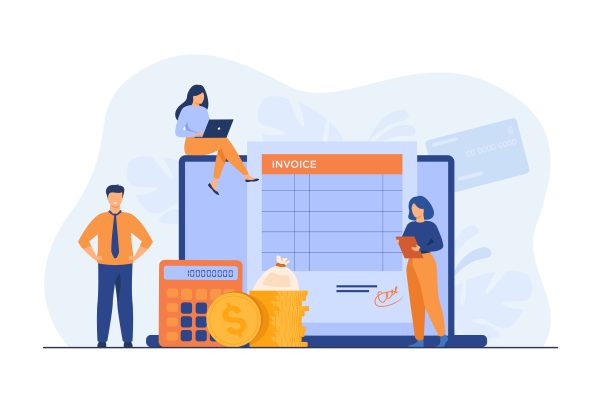
Harnessing client feedback is crucial for law firms aiming to enhance service quality and operational efficiency. By systematically collecting, analyzing, and acting on client feedback, law firms can identify areas for improvement, build stronger client relationships, and achieve better outcomes. This approach not only fosters continuous improvement but also ensures that client needs and expectations are consistently met, leading to greater satisfaction and loyalty.
The Importance of Client Feedback in Law Firms
Client feedback is a critical component for any service-oriented business, and law firms are no exception. It involves collecting opinions, comments, and evaluations from clients regarding the services they received. This feedback can be gathered through various means such as surveys, interviews, feedback forms, and online reviews.
Benefits of Client Feedback for Law Firms
-
Service Improvement : Client feedback helps law firms identify gaps in their services. Understanding clients’ pain points allows firms to address specific issues and improve their service delivery. By acting on feedback, law firms can tailor their services to better meet client expectations and enhance overall client experience ( source ).
-
Building Trust and Loyalty : Soliciting client feedback demonstrates a firm’s commitment to transparency and continuous improvement. This can build trust and foster long-term relationships with clients. Satisfied clients are more likely to return and refer others, which is crucial for client retention and acquisition ( source ).
-
Operational Efficiency : Feedback can highlight inefficiencies in a firm’s operations, enabling the firm to streamline processes and improve efficiency. Understanding client needs can help firms allocate resources more effectively, focusing on areas that add the most value ( source ).
-
Competitive Advantage : By leveraging client feedback, law firms can differentiate themselves from competitors who may not prioritize client input. Positive feedback can be used in marketing materials to enhance the firm’s reputation and attract new clients ( source ).
Real-World Examples of How Client Feedback Has Improved Law Firm Services
-
Case Study: Smith & Partners Law Firm : The firm received consistent feedback about long waiting times for client appointments. They implemented an online scheduling system that allowed clients to book appointments more flexibly. This change led to a 30% increase in client satisfaction and a 20% rise in client retention rates ( source ).
-
Case Study: Johnson Legal Group : Clients reported a lack of communication and updates regarding their cases. The firm introduced a client portal where clients could log in to see real-time updates on their cases. Client feedback post-implementation showed a significant improvement in communication satisfaction, with 90% of clients rating it as excellent ( source ).
-
Case Study: Green & Associates : Feedback indicated that clients found the legal jargon in documents confusing. The firm revised their documentation process to use plain language and provided explanatory notes for complex legal terms. This led to a 40% reduction in client queries regarding documentation and improved overall client understanding of legal processes ( source ).
Client feedback is invaluable for law firms aiming for continuous improvement. By actively collecting, analyzing, and acting on client feedback, law firms can enhance their service quality, build stronger client relationships, improve operational efficiency, and gain a competitive edge.
Methods for Collecting and Analyzing Client Feedback
To harness the full potential of client feedback, law firms must adopt effective methods for collecting and analyzing this valuable information. Here are some of the most successful approaches:
Surveys and Questionnaires
Surveys and questionnaires are among the most common and effective tools for collecting client feedback. They can be distributed through various channels, including email, websites, and mobile apps. Surveys allow for both quantitative and qualitative data collection, offering a comprehensive view of client satisfaction and areas for improvement.
- Long Form-Based Surveys : These detailed surveys cover multiple aspects of the client experience. They are ideal for gathering in-depth feedback but may suffer from low response rates due to their length ( source ).
- Short In-App Surveys : Brief surveys that pop up within a mobile app or web service. They are designed for quick responses and high engagement rates.
- Customer Satisfaction Score (CSAT) Surveys : Measure how satisfied clients are with a particular interaction or service, often through a simple question like “How satisfied were you with our service?” ( source ).
- Exit-Intent Surveys : These pop up when a client is about to leave a website, capturing last-minute feedback that might otherwise be lost.
Client Interviews and Focus Groups
Client interviews and focus groups provide an opportunity for more nuanced feedback through direct interaction. These methods are particularly valuable for uncovering deeper insights that surveys might miss.
- Client Interviews : One-on-one interviews can provide detailed, qualitative feedback. They allow for follow-up questions and clarifications, making it easier to understand complex issues.
- Focus Groups : Involve multiple clients discussing their experiences in a group setting, moderated by a facilitator. Focus groups can uncover common themes and provide diverse perspectives on your services ( source ).
Digital Tools and Platforms for Feedback Collection
Digital tools and platforms streamline the feedback collection process, making it easier to gather and analyze data efficiently.
- Website Feedback Widgets : Small, interactive tools placed on a website to capture immediate feedback from visitors. They are often used to gather feedback on specific pages or features ( source ).
- Transactional Emails : Follow-up emails sent after a service is provided to solicit feedback. These emails are personalized and often include a direct link to a survey.
- Suggestion Boards : Digital platforms where clients can leave suggestions, vote on ideas, and comment on others’ posts. This method fosters a sense of community and continuous improvement ( source ).
Analyzing Feedback Data for Actionable Insights
Collecting feedback is only half the battle; the real value lies in analyzing this data to extract actionable insights.
- Data Aggregation : Compiling data from various sources to get a holistic view of client feedback. Tools like Excel, Google Sheets, or specialized feedback platforms can help aggregate this data.
- Sentiment Analysis : Using software to analyze the sentiment of qualitative feedback. This helps identify overall client mood and specific areas of concern.
- Trend Analysis : Identifying recurring themes or issues in the feedback. This can help prioritize areas that need immediate attention.
- Actionable Insights : Translating the analyzed data into specific actions. For instance, if multiple clients point out a cumbersome process, look into streamlining it ( source ).
By employing these methods, law firms can gather comprehensive feedback that provides valuable insights into client needs and expectations. This, in turn, enables firms to make informed decisions aimed at continuous improvement.
Implementing Feedback for Continuous Improvement
Effectively utilizing client feedback for continuous improvement requires a structured approach. Law firms can employ several strategies to ensure that feedback translates into meaningful changes and enhanced client satisfaction.
Strategies for Acting on Client Feedback
-
Timely and Regular Collection : Collect feedback consistently at various stages of client interaction. This can be through surveys, follow-up emails, or direct conversations. Regular collection ensures that the feedback is current and relevant.
-
Categorization and Prioritization : Classify feedback based on urgency and impact. Immediate concerns should be addressed first, while less critical feedback can be scheduled for future improvements. Categorizing feedback helps in efficient resource allocation.
-
Action Plans : Develop specific, actionable steps for each piece of feedback. Assign responsibilities and set deadlines to ensure timely implementation. Clear action plans help in systematically addressing client concerns.
-
Communication with Clients : Inform clients about the changes made based on their feedback. This shows that the firm values their input and is committed to continuous improvement. Effective communication fosters trust and strengthens client relationships ( MBO Partners ).
Integrating Client Feedback into Daily Operations
Integrating client feedback into daily operations ensures that improvements are sustainable and embedded within the firm’s practices.
-
Feedback Loops : Create a continuous feedback loop where client input is regularly collected, reviewed, and implemented. This ongoing process ensures that feedback is always considered and acted upon promptly.
-
Standard Operating Procedures (SOPs) : Update SOPs to include steps for gathering and acting on feedback. By institutionalizing the feedback process, firms can ensure consistency and accountability.
-
Training and Development : Train staff on the importance of client feedback and how to incorporate it into their daily tasks. Role-playing scenarios and workshops can help employees better understand and implement feedback effectively.
-
Technology Integration : Utilize practice management software to streamline the feedback process. Tools like PracticePanther offer features such as automated client intake forms and workflow management, making it easier to integrate feedback into daily operations.
Tracking Improvements and Measuring Outcomes
To measure the effectiveness of implemented feedback, law firms should adopt clear metrics and regular review processes.
-
Set Clear Metrics : Define what success looks like by setting clear, measurable goals. Metrics could include client satisfaction scores, response times, or resolution rates.
-
Regular Reviews : Conduct regular performance reviews to assess progress. Internal audits or client satisfaction surveys can provide insights into how well the changes are working.
-
Client Follow-ups : Reach out to clients after changes have been implemented to gauge their satisfaction and gather additional feedback. This helps in understanding the impact of the improvements from the client’s perspective.
-
Reporting Tools : Use robust reporting tools to track improvements. For example, PracticePanther offers customizable tags and reporting features that help law firms keep track of every case, payment, document, and client detail.
Case Studies of Successful Implementation
-
Case Study 1 : A mid-sized law firm implemented a feedback loop using automated surveys sent after each case closure. By categorizing and prioritizing feedback, they were able to make targeted improvements, such as reducing response times and increasing case transparency. As a result, client satisfaction scores improved by 20% within six months.
-
Case Study 2 : A small law firm integrated feedback into their daily operations by updating their SOPs and training staff on the importance of client feedback. They also used practice management software to automate client intake and follow-up processes. This led to a 15% increase in client retention and a 25% increase in new client referrals.
-
Case Study 3 : A large law firm set clear metrics for success, such as improving response times and increasing positive feedback scores. They conducted regular reviews and used reporting tools to track their progress. Over a year, they saw a 30% improvement in their key performance indicators and received numerous accolades from clients for their improved service.
By implementing these strategies and integrating feedback into daily operations, law firms can ensure continuous improvement and enhanced client satisfaction.
Leveraging Client Feedback for Long-Term Success
Harnessing client feedback is not just about making immediate improvements; it’s about fostering a culture of continuous growth and excellence within law firms. By systematically collecting, analyzing, and acting on client feedback, law firms can build stronger client relationships, enhance service quality, and achieve operational efficiency.
Minute7 understands the critical role that client feedback plays in driving continuous improvement. Our robust time tracking and expense reporting platform is designed to help law firms streamline their operations and better manage their resources. With Minute7, law firms can efficiently track billable hours and expenses in real-time, ensuring accurate and timely billing, which is often highlighted as a key area of client concern in feedback.
By integrating Minute7 into their daily operations, law firms can address some of the most common client feedback points, such as transparency in billing and efficient resource allocation. Our seamless integration with QuickBooks allows for easy synchronization of time and expense data, reducing administrative burdens and allowing legal professionals to focus on delivering exceptional client service.
In conclusion, collecting and acting on client feedback is essential for law firms aiming for long-term success. Minute7 provides the tools necessary to not only gather and analyze this feedback but also to implement it effectively, ensuring that law firms can continuously improve and exceed client expectations. By leveraging the capabilities of Minute7, law firms can turn client feedback into actionable insights, driving continuous improvement and achieving greater client satisfaction.
For more information on how Minute7 can help your law firm harness client feedback for continuous improvement, visit our website .



